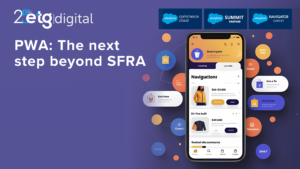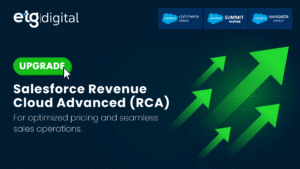Strong offline business models evaluate their online presence strategy and shift their focus on strengthening their digital commerce capabilities as the recession and loss of cash flow will impact business across sectors due to this unprecedented situation. To improve business efficiency and achieve cost optimization, the companies start investing in technology solutions as digital commerce, and remote working becomes a new norm. There is a surge in adopting enterprise SaaS solutions while everything is moving to the digital world. Without blocking any capital, the SaaS platform makes it easier for the companies to get the required technology at a considerable price. Industrial sectors like – warehouse, inventory, supply chain management or customer relationship- can be increasingly managed through SaaS platforms.
To survive this new era of limited physical-connect/remote interactions, the retail industry expects to see higher adoption of Enterprise SaaS solutions to implement the omnichannel strategy. Brands have to ensure seamless customer experience across platforms as they are expanding their presence to multiple online platforms and offline stores by adopting Offline Online Integrations approach. Brands have to ensure consistent pricing and wider product choice across the platforms to leverage the digital buying experience for the customers.
Why is it Important to Integrate Online and Offline Stores?
For nurturing consumers and complete the journey of conversion, both online and offline stores are important. To deliver a consistent customer experience, it is more effective to integrate your online and offline marketing strategies rather than treating both mediums in silos.
Customers look into the convenient shopping experience it may combine both online and offline stores to gather information across all channels whenever and wherever they need. They want a unique offering that comes with buying products in-store and buying through digital platforms. Offline Online Integrations approach helps build a trusted and cohesive brand but make sure that your strategy caters to the diverse needs of your audience at each touchpoint. Creating the right experience for your customers and having a cohesive and consistent experience across online and offline platforms is essential. The key to a successful, cost-effective marketing strategy is having consistency across both online and offline mediums.
How to Integrate Offline-Online Stores
Customers may interact with both your offline and online stores in their journey to purchase. Ensuring their interaction across all touchpoints is consistent is the key to providing a good customer experience. Make it convenient for customers to shop in both channels by providing info about your website to customers who walk in. For the online shoppers, it clearly outlines where your physical stores are located. To make the most of your offline store and keep growing across channels, now let’s look at how to integrate offline with online stores.

- Use one system for multiple channels.
For the new ecommerce site, major brick-and-mortar stores can utilize their existing logistics networks. To prevent overselling or underselling, inventory must be kept in sync. For both online and offline components of the store, use-of a single integrated point-of-sale system (POS) is the best solution. To streamline and simplify accounting processes, brands need an automated and real-time system to sync inventory across all channels.
- Expand to new channels
More new customers you can access if you expand your reach, online sphere has many channel opportunities to pursue.
Few channels to be considered:
i) Social media
An easy way for customers to shop your products. Social media tells your brand story and connects with potential customers. Social Media platforms are Facebook, Instagram, Snapchat, Twitter, LinkedIn, Pinterest – the list goes on. Depending on your target audience, identify the right channel for your business. Make sure to mark your presence where your customers are.
ii) Online marketplaces
Many online retailers also expand their presence to online marketplaces rather than creating their ecommerce store. But what are online marketplaces? To provide many different products from many different sellers, eCommerce sites offer platforms for the sellers to sell their products online. These types of eCommerce sites are generally known as the marketplace.
The few most popular marketplaces are:
- Amazon
- eBay
- Walmart
- Etsy
- Alibaba.com and
- Google Express
Choose one who is making more sense for your brand. It’s worth exploring your opportunities with inventory management software as your business may scale across multiple marketplaces. And to remove the risk of overselling and underselling, this system will automatically synchronize your stock levels.
iii) Comparison shopping engines
When looking to purchase a specific product, customers often do their research. So being informed about major comparison websites is vital as you can also list your products there and highlight the features like quality, price and shipping rate compared to other online retailers.
- Provide fulfillment options
You can provide customers with fulfilment options like buying online but pick up their merchandise from your physical stores. To increase foot traffic to your physical stores, BOPIS is a great option as it also provides convenience to both the customer and retailers.
About Buy Online, Pick up in Store (BOPIS)
This particular way of commerce is the blend of the online and in-store experience and encourage the approach of online offline shopping integration. The demand for the practice of offering BOPIS has grown following Covid-19 as we are supposed to maintain social distancing. BOPIS offers more comfortable buying online. While providing a more convenient way to shop, BOPIS allows retailers to engage with customers.
How Does BOPIS Work?
BOPIS delivers convenience to the shoppers. They will enjoy the flexibility of how they want their orders fulfilled, and they want to be able to complete their purchases or make returns quickly and efficiently.
Here are the steps:
- Through the website or mobile app, customers buy online.
- The store fulfills the online order.
There are two scenarios of ordering –
First Scenario: The item chosen by the customer is available at the store – When ready, the associate can send a notification to the customer and letting them know that pickup is ready.
Second Scenario: The chosen item is not available at the store – the associate will receive the item from the warehouse facility. Then notify the customer once it arrives.
The customer picks up the order.
How retailers make the best out of BOPIS
- Full access to in-store apps for Store associates.
- Run pilot program flagship centres in the initial stage before scaling up for all the branches.
- To provide real-time product inventory to online shoppers, establish a flawless connection between POS and warehouse management system.
To fulfill orders for customers who don’t want to visit in person, you can also offer ship from store options and use your physical location inventory. This hybrid model is fast becoming imperative for retail business and customer- expectation of real-time experience is well served by this online offline shopping integration.
— Partha Kotagiri,
Vice President Technology & Customer Success,
ETG Digital
“90% of brick-and-mortar retailers will offer BOPIS by 2022, especially during the peak retail season. This unprecedented Covid situation makes almost every retailer take order online and fulfill it in-store. This shift has given you the opportunity to expand your reach by having better inventory visibility.”
To know more about how to deal with Omnichannel Strategies and Challenges – Read our blog – How Retailers Can Tackle Omnichannel Challenges.
- Introducing digital tech to the physical store
To help customers feel like they’re experiencing the products in person, recreate the offline shopping experience online through augmented reality and videos. Previously, online shopping is viewed as convenient, but now people want their in-store experience to be as streamlined as possible. To provide a more modern experience, update your physical store by offering an easier buying experience like integrating a POS system, fast and contactless checkouts.
- Mobile-Friendly
To provide a friction-free experience across in-store and online, consider how you can better leverage technology. You do need to make sure your ecommerce site works well on mobile devices.
Conclusion
Having an online and offline presence can keep retailers one step ahead in the competition. To expand your offline store, creating an online store provides several advantages. An online store can not only expand your reach but also increase your insight into your customers. Reach out to ETG Digital to sort a convenient plan for Offline Online Integrations approach for better ROI.
About ETG Digital
ETG is a Crest Level Salesforce Partner headquartered in Plano, Texas. We are ISO 9001:2015 certified company with a global delivery center in Hyderabad, India. We have dedicated teams of professionals spanning continents located in US, Canada, UAE, UK, Australia and India. Our ability to maintain talent hubs in multiple locations and working on projects for clients from various domains gives us a very unique advantage. An advantage to leverage proven technologies like Salesforce Commerce, Sales, Service, Partner and Marketing Clouds and using them to deliver tailor made solutions for clients to suit their business requirements.
If you are looking to take your business into the next league, you are at the right place. Connect with us at info@etg.digital or call us at +1 469 666 1119








